Tech solutions and real world tips
Matt Tomkins
PROJECTS EDITOR
Our workshop puppet master, Matt has a penchant for restoring British classics in particular.
This month Has been preparing for the race season with an oil change for the Seven and a service for his car trailer.
Rich March
PRO BUFFER
New recruit Rich runs UK Detailing Academy. Our expert at making things shiny.
This month Is getting down and dirty with some hot tips for convertible roof cleaning and long-term maintenance.
Ed Hughes
WORKSHOP GENIUS
A former teacher, Ed singlehandedly keeps a fleet of obscure classics on the road. He’s never owned a modern car and intends keep it that way.
This month Has been wondering where to start with a pair of extremely rusty windscreen pillars…
Nigel Clark
DIY RESTORER
Nigel’s driveway achievements rival those of pro mechanics. He’s our resident Triumph and BMW expert.
This month Has been enjoying the warmer weather and lighter, longer evenings, offering an opportunity to be out in the classics more often.
MISFIRES
Why does my car misfire?
Q I’ve taken my Renault Clio out of storage. When revved it drops briefly onto two cylinders, with large sparks jumping between the plug caps and the engine. Suggestions?
Mark Holdsworth, Keighley
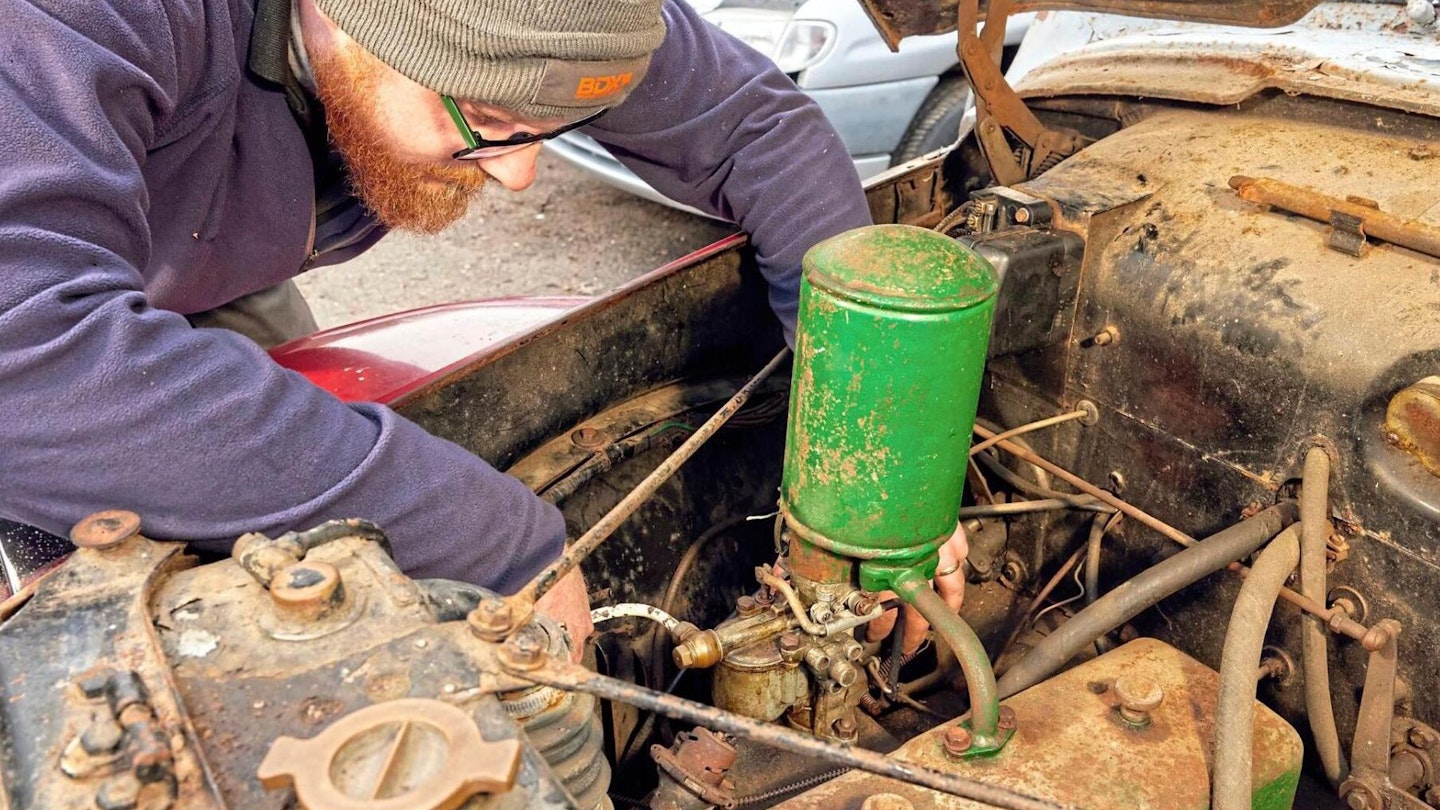
CONDEMNED?
Don’t automatically bin plugs and HT leads – they’re usually quite innocent. Keep a few old spares for testing.
BUT ARE THEY REAL?
Always buy spark plugs from a reputable retailer. There are lots of counterfeit ones around.
BANG!
Backfires, either from air intake or exhaust, are usually caused by a misdirected spark or a suddenly-weak mixture.
Ed says
A We'll look at a variety of possibilities – though we think your problem is simple. When speeding the engine up, pressure in the cylinder is much higher. This requires a higher voltage to make a spark jump the plug gap. If the gaps are too large – if you haven't serviced them since last Spring – the spark finds it easier to escape via the dirt and damp on the outside of the caps and plugs. Most misfires and backfires are a result of sparks taking an easier path to earth. Unless caps and leads are physically deteriorated or the rotor arm burned, it'll be enough to clean everything with a petrol-moistened rag. Make sure plug gaps are correct and if the electrodes are rounded and worn, replace them. Most misfires appear under load or when accelerating. A loss of power or roughness suggests one cylinder's going down; a giant hesitation points to some common part – usually the rotor arm or coil. If you find no fault in the ignition, it's possible the fuel system can't keep up. Examine fuel supply lines, pump and carburettor. It's a likely symptom if one of a pair of carbs is not working, or if carbs are badly-balanced.
A constant misfire, even when idling, is easy to find. Using insulated pliers, pull off each HT lead in turn. The engine slows when a good one is removed, but remains the same when you've identified the wrong 'un. Try substituting one plug or lead at a time to isolate the problem. You can swap them between cylinders if you have no spares. If the problem remains in that cylinder, you may have valve trouble (clearance; burned) or a large air leak (manifold gasket; servo etc).
MATT SAYS
One useful diagnostic tip I picked up amid a late night breakdown is to open the bonnet in the pitch dark and watch the HT leads as the engine runs. You'll see the high voltage causes the ends to glow. Any extra-bright areas, hotspots or sparks indicate something needs your attention.
PEUGEOT 106
DIAGNOSTICS MADE SIMPLE
Q Can you offer any advice on how to read error codes off my 1992 Peugeot 106?
James Peters, Lowestoft
Ed says
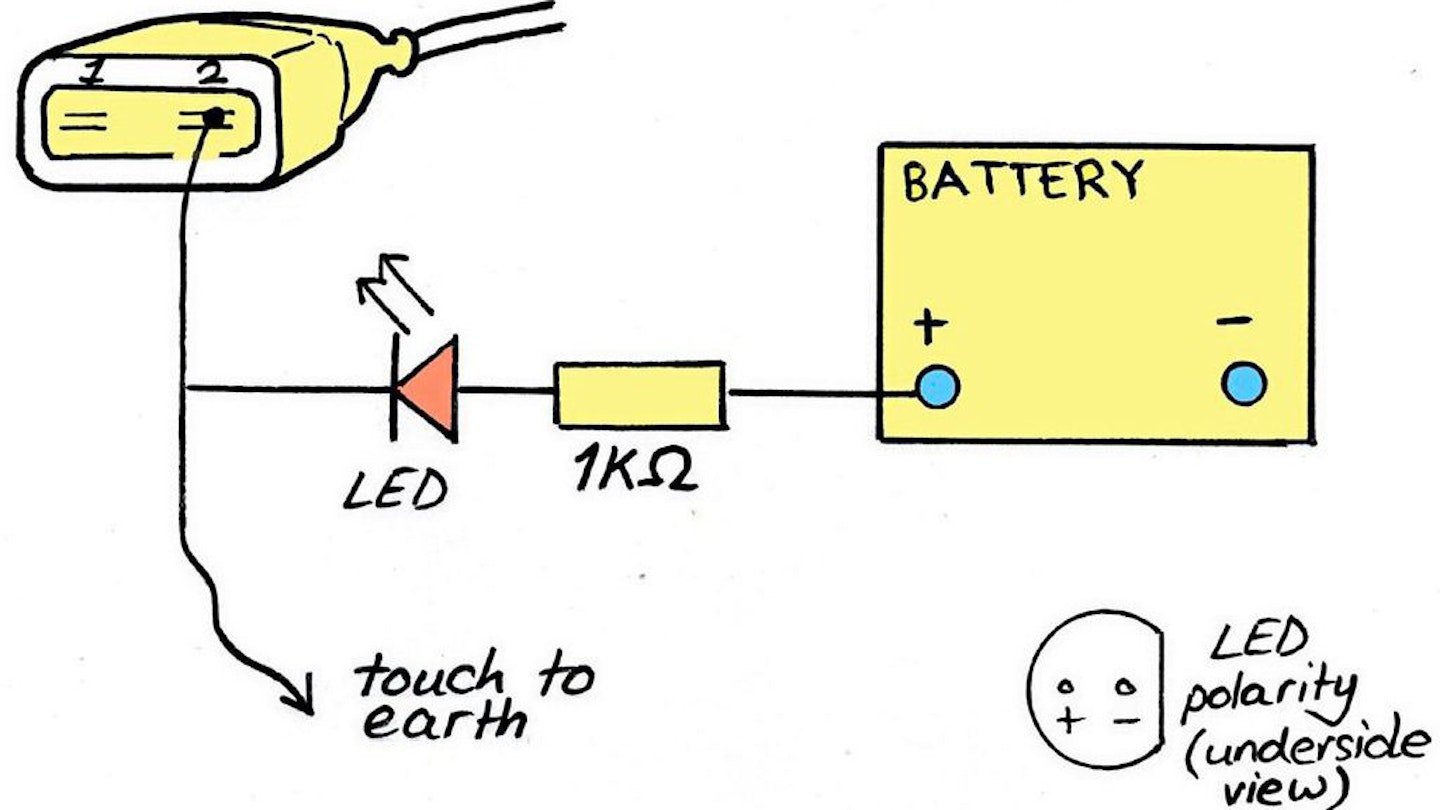
It’s like a Year Nine school project!
A You should find a two-pin plug behind the headlamp, by the ECU. Insert a paperclip into pin 2. Connect a red LED, resistor and an earth wire as shown. Earth the wire for a few seconds then release it. The unit will flash error codes through the LED: (long flash) - (short flash) (short flash) indicates 1-2, or code 12 – which announces the start of the error codes, flashed in the same two-digit form. It ends with code 11. Write them down (they repeat three times before moving to the next) and find the codes that apply to the ECU on your car (usually Bosch or Marelli). Clear existing codes by earthing pin 2 of the diagnostic plug for 10 seconds. If the car has a keypad immobiliser, you'll have to unlock it before starting work.
BRAKING SYSTEMS
Given a brake!
Q Will a remote brake servo improve my Morris Minor's awful brakes?
Nic Kellow, Rugby
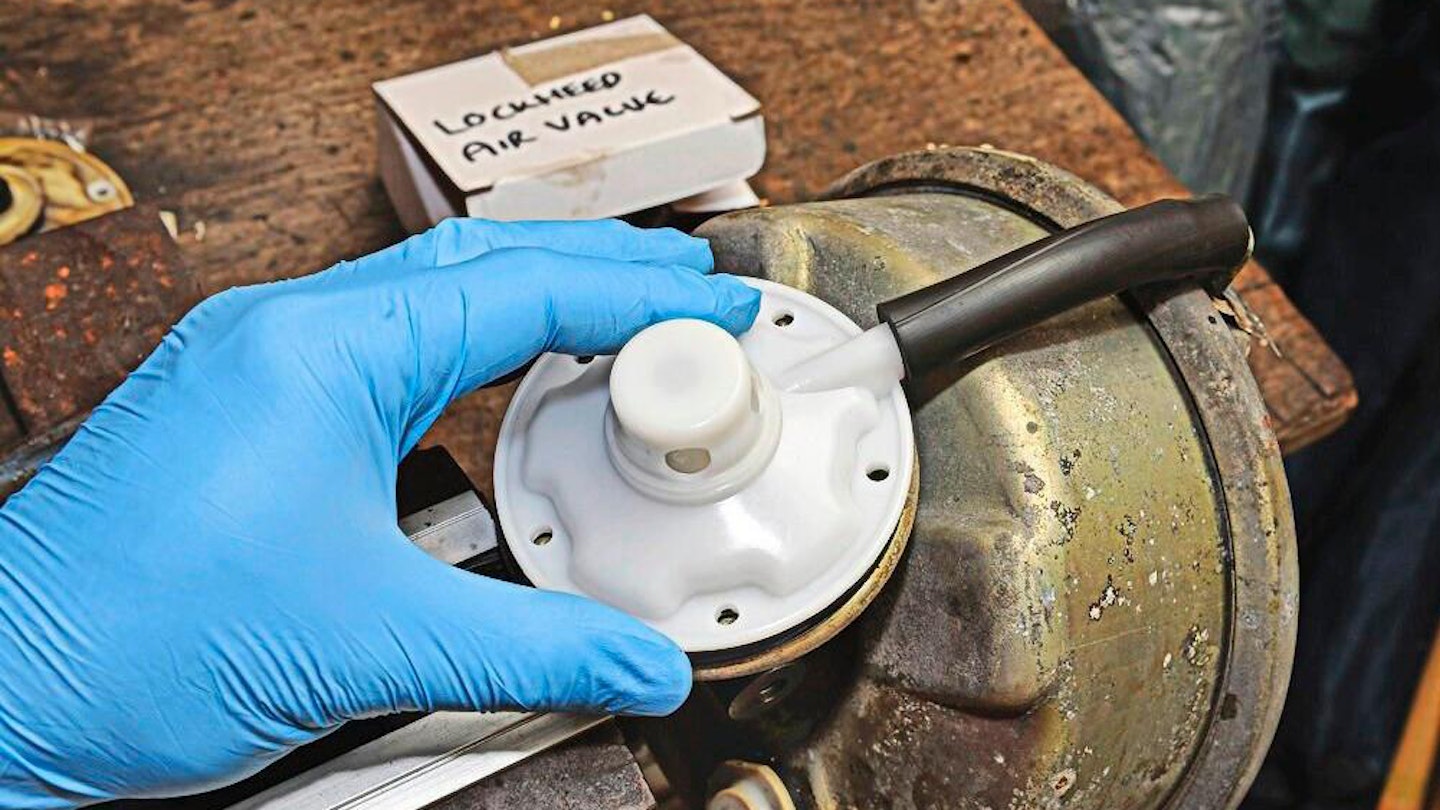
Servos are useful – but not as a sticking plaster for derelict brakes.
Ed says
A It's hard to judge from here whether your brakes are 'awful' by modern standards, or just awful. A Minor – and most classics for that matter – should have brakes that are adequate. In other words, they don't grab, routinely lock wheels or pull to one side, or give you palpitations every time you have to pull up sharply. Non-servo brakes require your physical effort to make them work, but it shouldn't be a Herculean task.
That said, if you mostly drive more modern machinery, then a servo will make the Morris more user-friendly. Modern brakes are so sharp that we'd advise anyone in a classic to give extra stopping distance at all times. Your servo will need some replumbing of the brake lines (and subsequent bleeding) and the insertion of a vacuum take-off in the inlet manifold. Before proceeding, thoroughly inspect the brakes looking for seized or leaking wheel cylinders and master cylinder, shoes contaminated with brake fluid , grease or oil, excessive shoe wear, correct adjustment and drums (or discs) that are scored or otherwise heavily worn.
Routinely inspect them after any period of storage, which is when cylinders tend to rust solid or start leaking. Change brake fluid every two years.
TOURING
The trip of a lunchtime
Q I'm planning a gastronomic tour of Italy in my Lancia Delta. What tools and spares should I pack?
Henry Newell, Berkshire
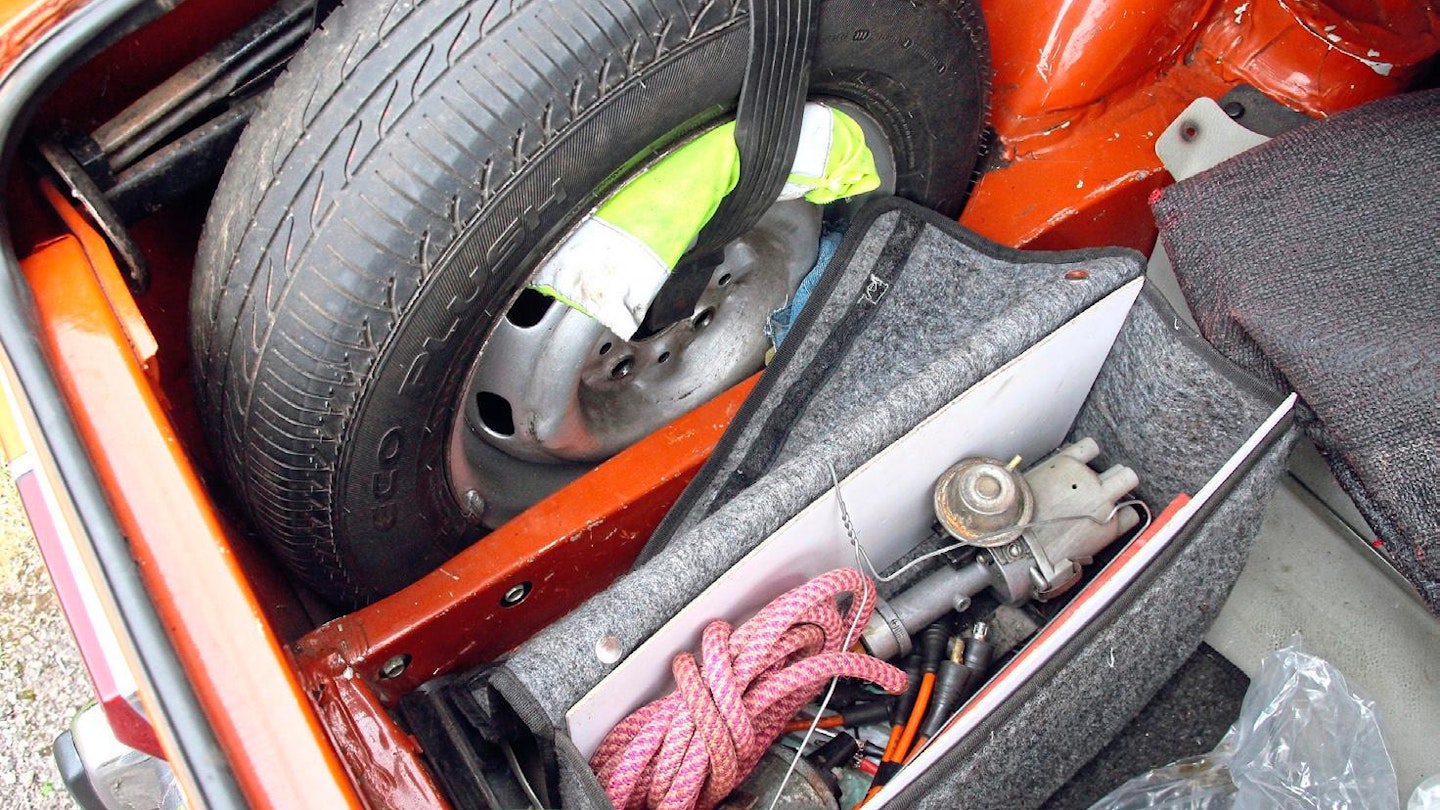
A small selection of useful bits is reassuring.
Ed says
A We'll generalise for anyone, taking any car, anywhere. Take a high-vis vest for each occupant, a warning triangle, wheel wrench and jack/trolley jack. Find a decent spare tyre! Loosen wheel nuts and retorque them correctly to avoid finding them seized solid. Take a tyre pump or inflator plus a reliable pressure gauge. Carry a mostly-full fuel can, brake fluid, engine and gear oil and water or coolant – classic-friendly varieties are hard to find on major routes. Take working gloves and rags. Make sure you have a fan belt, rotor arm, points and condenser (where fitted) and a spare spark plug and long HT lead. Consider a fuel pump, coil and maybe a water pump; other items if you have them – electronic ignition amplifier, spare electronic distributor, ECU, sensors, head gasket kit etc. They're more useful in the car than at home. Even if you can't fit them, a mechanic can. Speaking of which, take tools according to your skill level. As a basic, we'd suggest good quality slotted screwdrivers: large, small and miniature electrical; Philips no.1 and 2; pliers, wire cutters (plus electrical wire and a wire coat hanger), a spark plug wrench and an appropriate set of spanners (up to about 1924mm or ¾ to one inch) to fit your car. Take a head torch to save damaging your phone. More advanced DIYers should consider overalls, a socket set and maybe a torque wrench, plus Torx or other special bits. If you know your car well, take selected sizes of spanner and socket, rather than the whole set. Give the engine bay a clean-up, to make quick inspections and minor repairs less grimy.
It's worth remembering that a thousand-mile trip, say, would have been an undemanding feat for most classics when new. The best thing you can do to ensure success is to service the car a month beforehand and then use it intensively, attending to any issues that arise along the way. By the time the holiday comes round, you'll have great confidence in the machine.
TOOLS
CARELESS TORQUE
Q I have a ½in torque wrench, range 28Nm to 200Nm. I'm thinking of buying a 'baby' ¼in one – but would I use it?
Miklós Reményi, Boston
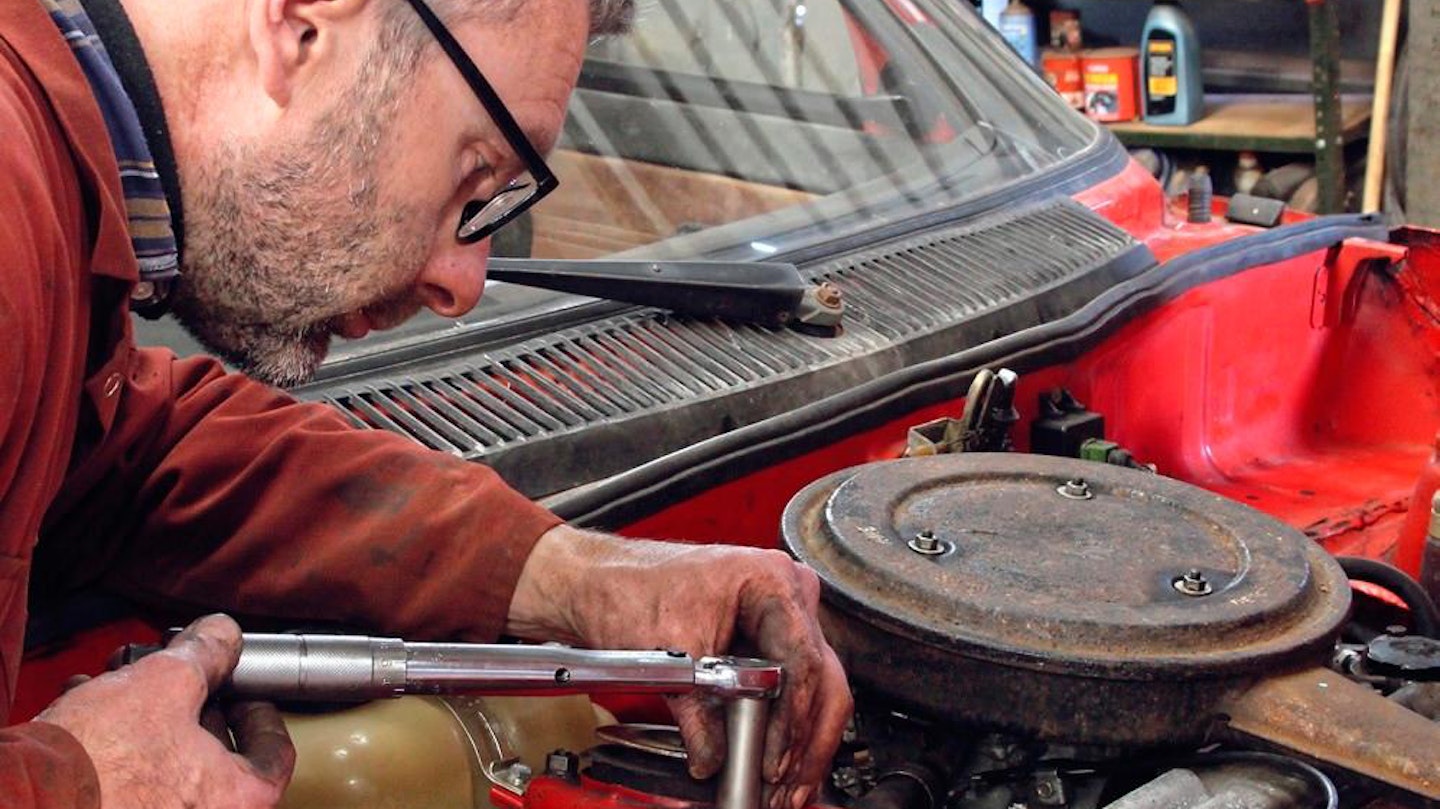
Even strut top nuts require only very modest torque.
Ed says
AYes. Anything M8 (or equivalent) or below is way below the lower limit of the larger torque wrench, and it's easy to strip threads if the manufacturer has only bothered to make them strong enough for the expected torque setting. Typically M8 (13mm hex) is 16 to 21Nm, depending on application and M6 as low as 5-7Nm. Not only do threads become stripped and bolts snapped, but castings are permanently distorted by overtightening.
ELECTRICS
Mixed messages
Q My Renault 19's fuel gauge reads almost empty, most of the time, and the warning lamp doesn't work. Any ideas?
Becca Roberts, Llandudno
Ed says
A It sounds like a problem with the tank sender unit – specifically we think it's lost its earth connection. It may have just fatigued at one end and broken, or it may have corroded away – it depends where it's mounted. It may earth to a screw in, say a cover panel under the rear seat or maybe it shares an earth with one of the rear lights.
TYRES
Tread carefully!
Q My Ford Focus has winter tyres on it. Should I continue to use them as the weather warms up?
Andrew Norris, Kendal
Ed says
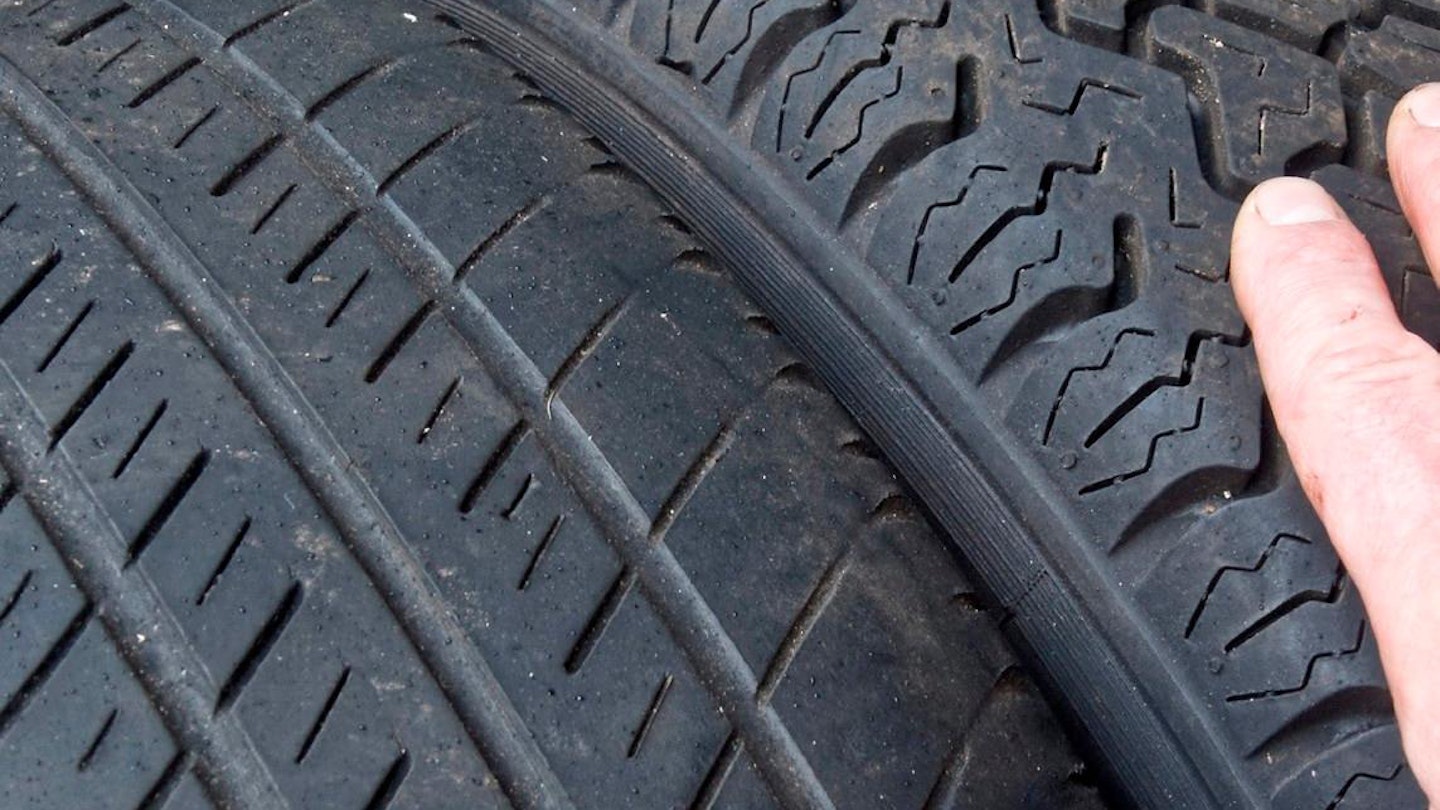
Seasonal tyres differ in tread and compound.
AWinter tyres are soft, to grip at low temperatures, and have lots of tread blocks and sipes to cut into and disperse mud, slush and surface water. In summer, you'll probably find them noisy, a bit squirmy and – paradoxically – a little too grippy for spirited driving. They'll also wear more rapidly. However, if you're just trundling around, you're unlikely to notice any of this. If annual mileage is low, it's hardly worth having two sets of tyres ageing badly in the garage: just wear out the ones on the car. If you cover a high mileage, however, we think you should probably swap them over. Get a secondhand set of wheels to put them on.
IGNITION SYSTEMS
IS RESISTANCE FUTILE?
Q My Triumph GT6 starts immediately, then dies when I release the key to the 'run' position.
Steven Knight, Dundalk
Ed says
A Your car has ballast ignition. It's an aid to reliable starting. The coil (resistance 1 - 2) is rated 6 to 9V. In normal running, it's fed by the 'ballast' resistor which prevents the coil being overloaded. When starting, the ballast resistor is bypassed – sending full battery voltage to the coil. With a good battery, the coil is overdriven, giving a strong spark. With a tired battery, the coil still receives the required 6-9V delivering an adequate spark. It sounds like your ballast resistor has failed so the coil only runs when directly supplied. In an emergency, you can wire coil + straight to battery +, but just temporarily. Most ballast resistors are in a ceramic block near the coil, but some
Triumph and other BL cars use a length of resistance wire between ignition switch and coil. This looks like any other wire. Check for a loose connection or wire broken / corroded at the crimp terminal. The contacts that bypass the ballast resistor are usually found on the starter solenoid.
FLOOR PAINT
TOTALLY FLOORED
Q I want to paint my garage floor. What should I use?
Todd Leymann, Diss
Ed says
A There are three options: water-based acrylic, oil-based polyurethane and two-part epoxy. Notionally expensive, the epoxy is by far the most durable, and economical to apply. The others are fine for cupboards, but the heavy traffic of a confined work space will soon destroy them. Follow the instructions to the letter, especially when it comes to priming/pre-sealing the existing surface. Some concrete constantly moults and may need vacuuming, then pre-sealing with a dilute PVA solution, or diluted floor paint. If very rough, a screed coat may be needed. If the floor's contaminated with oil, you'll need to do with it what you can: scraping, wire-brushing and degreasing.
However, it may still cause problems with long-term adhesion. Finally, pick a good colour. White will be ruined after a week, but a light grey will reflect almost as much light – important in a small space.
READER'S TIPS
When poking a nut onto a stud using a socket and long extension, pack the socket out with more nuts, or stick the nut in with blu-tack etc. You can then apply some force to wriggle it onto the thread.
Jon Hamer, Huddersfield
Sending an air cleaner for powdercoating? Block the breather inlet first: you'll never get the sand out otherwise!
Andy Long, Belfast
FAILURE OF THE MONTH
Ed chickens out!
When the aluminium threads went on the brake union (left) I found another, helpfully in cast iron (right). Problem solved… until I cleaned and examined it. It was completely home-made from a ring of steel and three separate unions, brazed together. The holes in the steel ring were all wonky. I thought about it… but not for long.
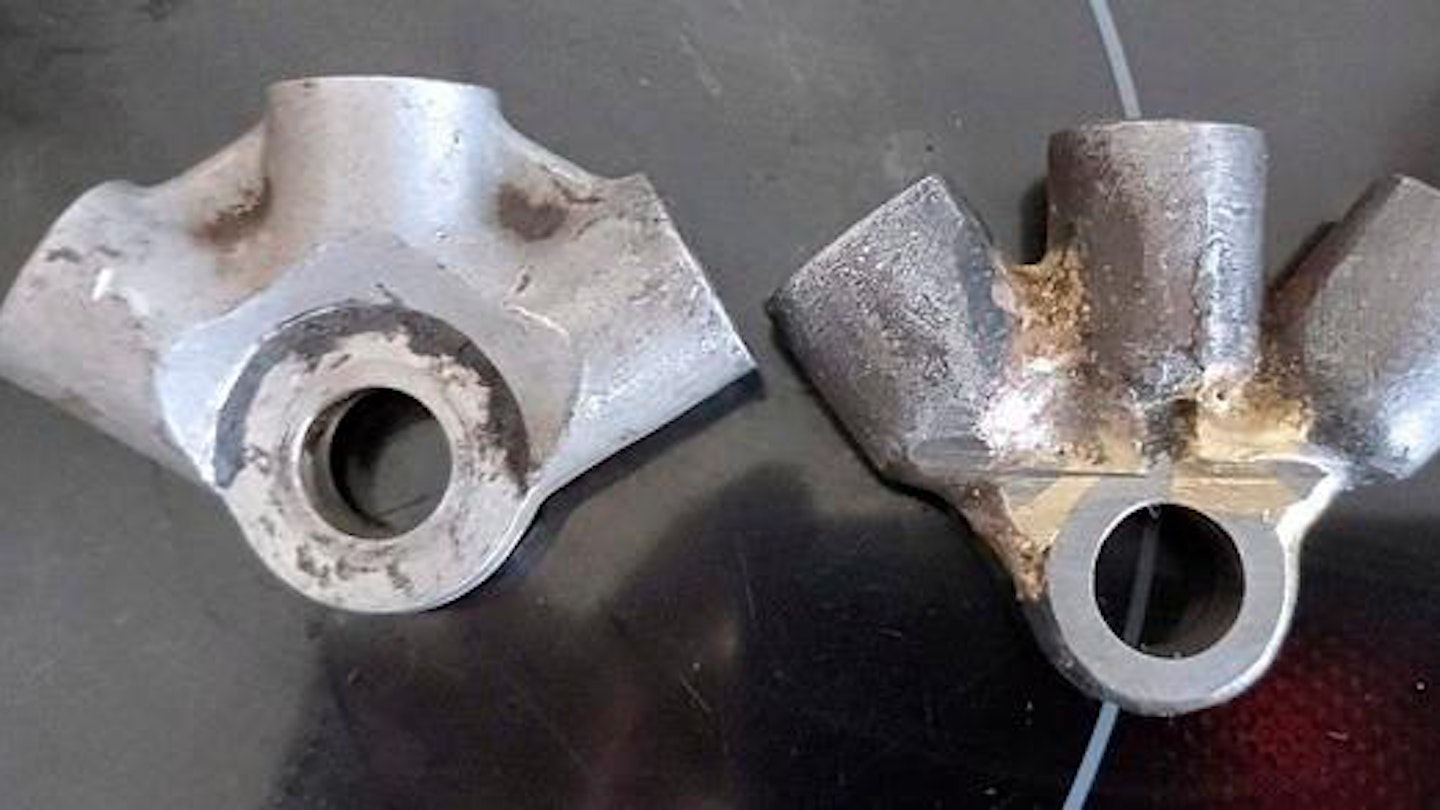
Er… pass!
Subscribe to a PC Print+ Subscription today and you'll get instant digital access PLUS FREE UK delivery so you'll never miss an issue again. Check out our offers today.
